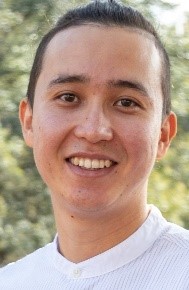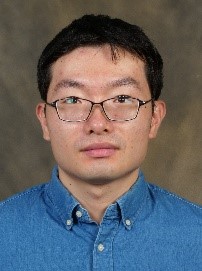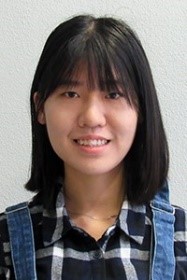
Propagation-invariant space-time wave packets localized in all dimensions
Optical wave packets that are localized in space and time, but nevertheless overcome diffraction and travel rigidly in free space, are a long sought-after field structure with applications ranging from microscopy and remote sensing to nonlinear and quantum optics. However, synthesizing such wave packets requires introducing non-differentiable angular dispersion with high spectral precision in two transverse dimensions, a capability that has eluded optics to date. Here, we describe an experimental strategy capable of sculpting the spatio-temporal spectrum of a generic pulsed beam by introducing arbitrary radial chirp via two-dimensional conformal coordinate transformations of the spectrally resolved field. This procedure yields propagation-invariant `space-time’ wave packets localized in all dimensions, with tunable group velocity in the range from 0.7c to 1.8c in free space and endowed with prescribed orbital angular momentum. By providing unprecedented flexibility in sculpting the three-dimensional structure of pulsed optical fields, our experimental strategy promises to be a versatile platform for the emerging enterprise of space-time optics.
Murat is currently a PhD student in Dr. Abouraddy’s research group. He received his B.Sc. from Nazarbayev University, Kazakhstan in 2017, and his M.Sc. from CREOL in 2019. His research focuses on “space-time (ST) wave packets”, which are spatio-temporally structured optical fields defying diffraction and dispersion in free space, and possessing unique features such as tunability of its group velocity arbitrarily in free space and anomalous refraction at a planar interface between linear non-dispersive media. Murat’s work relies on the collaborative projects with universities and research centers from US, UK, France, Japan and Canada. Scientific achievements in his research include over 25 peer-reviewed journal publications, some of which have been published in the top journals such as Nature Photonics and Physics Review Letters, over 30 conference proceedings, and over 600 citations.
Runners-up

Towards robust imaging through dynamic scattering media: adaptive inverse mapping and its applications
Imaging through dynamic scattering media is an indispensable tool in many applications, such as underwater imaging and biological tissue imaging. It is a challenging task since it involves solving for an evolving inverse mapping from speckles to object images. Various approaches have been proposed in recent years. However, to date, none is able to preserve high image quality without either assuming a finite number of sources for dynamic changes, assuming a thin scattering medium, or requiring the access to both ends of the medium. In this talk, I will demonstrate our proposed data-driven method: adaptive inverse mapping (AIP). We show that the inverse mapping can be corrected through unsupervised learning if the dynamic scattering medium is followed closely. Therefore, the AIP method only requires output speckles to stabilize the imaging performance, without any prior knowledge on the dynamic changes. We test the AIP method on two numerical simulations, namely, a dynamic scattering system formulated as an evolving transmission matrix and a telescope with a changing random phase mask at a defocus plane. Finally, we experimentally apply the AIP method on a dynamic disordered optical fiber imaging system. Increased robustness in imaging is observed in all three cases. With these excellent performances, we consider the AIP method as a promising candidate towards robust imaging through a variety of dynamic scattering media.
Xiaowen is a Ph.D. candidate in Dr. Axel Schülzgen’s fiber optics research group. He received his B.S. degree in Optical Science and Technology from Fudan University, China, in 2015, and his M.S. degree in Optics and Photonics from CREOL, University of Central Florida, in 2020. His research interests include microstructured fiber optics, machine learning applications in optics, and optical fiber imaging. Xiaowen has authored and co-authored 14 journal and conference papers.

Doubling the field of view of Augmented Reality display system
Augmented reality (AR) displays have found widespread applications in entertainment, education, engineering, and medical surgeries, just to name a few. By combining computer-generated images with a see-through environment, AR technology as the next-generation information platform is revolutionizing the relationship and interactions between viewers and displays. To provide a realistic viewing experience, a sufficient field of view (FoV) with high imaging quality is required. Therefore, extending the FoV in AR systems has become a topic of high interest in the near-eye display field. In this talk, I will present a glasses-like AR system with a novel polarization-dependent combiner (PDC) to expand the FoV. This concept is analogous to the polarization division multiplexing in optical fiber communications, where two orthogonal polarizations are used to double the information capability. Here, we extend the viewing angle by encoding the left and right FOVs into two orthogonal polarization states, respectively. The PDC consists of two PVLs with opposite polarization responses and different off-axis angles, is designed to selectively diffract LCP and RCP images. By using an optical engine and a liquid crystal polarization modulator (LCPM) to create two images with orthogonal polarization states, the proposed AR configuration exhibits an extended image content while maintaining a compact form factor.
Kun is currently a PhD candidate in Prof. Shin-Tson Wu’s Liquid Crystal Photonics and Display Group. She received the B.S. degree in Optoelectronics from Tianjin University in 2016, and the M.S. degree in optics and photonics with CREOL in 2019. Her research interests focus on liquid-crystal photonics and novel optical system design for near-eye displays. Kun has authored and co-authored 28 journal articles and 8 conference proceedings, and is also a co-inventor in 4 US patents. Kun is a student member of SPIE, SID, and IEEE, and was granted the SPIE Optics and Photonics Education scholarship (2021), ILCS FRL awards (2021), IEEE (Orlando) Outstanding graduate student award and scholarship (2021), SPIE Optics and Photonics Education scholarship (2021), and the CREOL Dean’s Dissertation Completion Fellowship (Spring 2022).